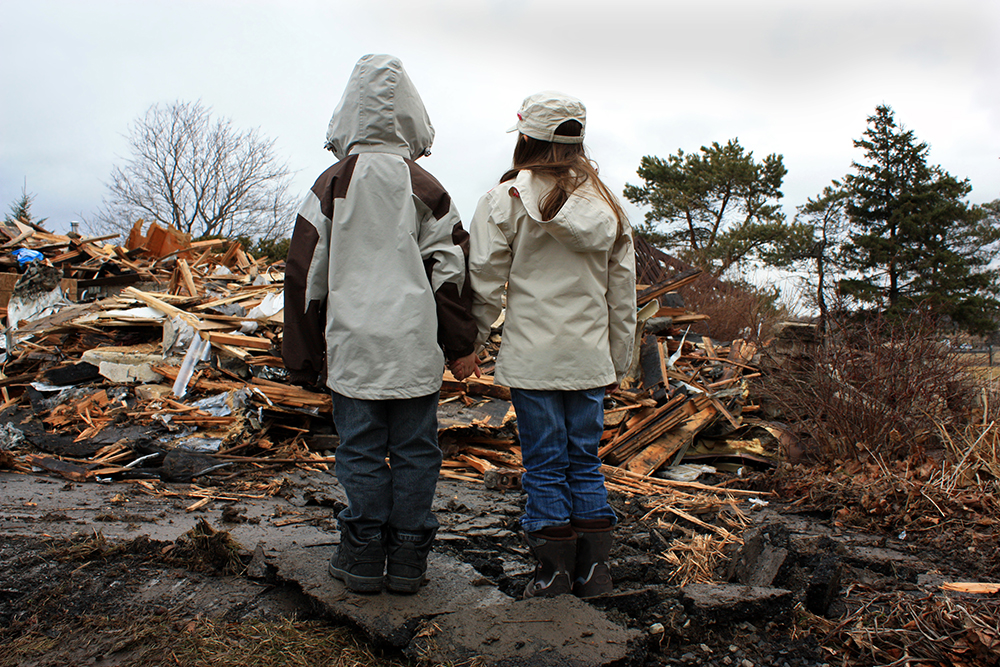We are born trusting. In the beginning, we put our trust in our parents and relatives to care for us, love us, and keep us alive. Yes, these are basic needs, but they are also important ones!
Unfortunately, over time, something happens.
We get let down. We get left out. We go through a break-up or betrayal. The hard truth is that a lot of things just happen in our lives that cause us to lose trust in others. Knowing this, is it even possible to learn to trust again?
Yes. You can trust again!

Defining Trust is a Must
How do we define trust?
Trust is allowing someone to know our vulnerabilities. It’s about revealing our soft spots, failures, pain, negatives, and weaknesses. When you allow someone to see the real you, it’s a way of saying, “I trust you with this information, and I believe that you’re not going to do something hurtful to me with it.”
In the Bible, one of the translations for the word “trust” in Hebrew is “to be careless.” This means that you have so much trust in someone that you’re just careless with them. You don’t worry about saying the right thing. There is no walking on eggshells. There is no fear. You are truly yourself when you show that vulnerability and trust.
This “carelessness” comes from knowing that, no matter what, you are safe with this person you trust. When someone violates that trust or exposes one of the “secret parts” of ourselves that we don’t share with everyone, it hurts. Sometimes deeply.
That betrayal is what I call a trust fracture. How do trust fractures happen? Unfortunately, trust can be broken in a number of ways, especially as we grow older.
Divorce, problems with an adult child, challenges at work, friendship drama, and disappointment are all common culprits of trust fractures. How we approach rebuilding trust after it fractures that makes all the difference.
The Two Big Don’ts in Trusting
Two different outcomes can happen when someone breaks our trust. Sadly, sometimes these trust fractures happen more than once and we experience a hurtful pattern from the same person. Small breaches in confidence add up! Once those breaches happen, it can be hard to trust anyone, whether they’re a longtime friend or someone new.
Big Don’t #1: We don’t trust anyone.
When we lose trust, we often default to not trusting ANYONE. That’s not good at all. You need safe people in your life and that means having trust in them. They’ll give you the right nutrients for a happier and more trusting life. (Information on how to identify the safe people in your life is in my blog post here.)
Big Don’t #2: We trust everyone (but shouldn’t)
Or, conversely, we trust TOO quickly. When people let us down or are inconsistent, we can sometimes forgive and forget without sitting back and thinking, “Let me discern if you’re gonna really change your ways here.”
Then, the cycle repeats.
Trusting everyone or trusting no one at all is not a healthy way to work through losing trust. You end up in a passive permanent state where you wait for people to come to you. That won’t give you the nutrients you need at all.
6 Ways to Learn to Trust Again
The good news is that you can learn to trust again, no matter how deep the fracture, if both people agree to change (and actually do).
Repairing a trust fracture won’t happen overnight. It is going to be hard work, too. It takes time to rebuild trust or to initially put your trust in someone after a pattern of broken promises. But, if you follow these steps, you will be in a prime position to start trusting again.
- Count The Cost. By not trusting anyone, consider these questions: What am I missing out on? Am I lonely? Am I lacking energy? Healthy boundaries are one thing. They help us with trusting people. But, when you put up too many boundaries to the point of isolation, you lose out on the potential for the nutrients needed for a happier life.
- Don’t Be Afraid. A big step toward rebuilding trust or putting your trust in someone new is overcoming the fear-need complex. It’s something in our head that says, “I’m afraid of needing people so I won’t need them. But, then I feel like I really need them and I get afraid.” It’s a hard, back and forth internal struggle. Let the need overcome that fear.
- Stick Your Toe in the Water. Take a small risk with someone NEW and see what happens. Allow someone to see a small mistake you made and be vulnerable. This is what happens right after you work through the fear I mentioned in #2.
- Pick the Right People to Trust. Trusting someone is hard, so don’t make it harder than it has to be. Make sure people deserve your trust. You’ve got to make sure the people you’re surrounding yourself with are not going to intentionally betray your trust I always stress the need to identify safe people and trust is a big part of that concept.
- Treat Others as You Want to Be Treated. Trust is truly a two-way street. The foundation of trust is built when you treat someone well, regardless of what they can or can’t do for us. Start to look out for them, start to put their needs in front of your own. It’s a lot easier to build trust with someone who shows consistent, good behavior toward us. It’s also a way to show the other person how they can build trust with you!
- Balance Strength & Vulnerability. A strong person is one who can be vulnerable with others. Meaning, strength comes from being able to trust someone. For example, if you tell someone you want to trust that you’re feeling anxious about a situation at work and they give you warmth in response, that’s a show of strength. It is not weak to show vulnerability. Quite the opposite in fact. Keep in mind, this is not the kind of strength that dominates people or controls them, but the kind of strength that is balanced with being vulnerable.
It takes a lot of work to build trust, and even more, work to build it back up after a trust fracture. Trust is not something that should be given freely (meaning just to anyone). It should be earned.













